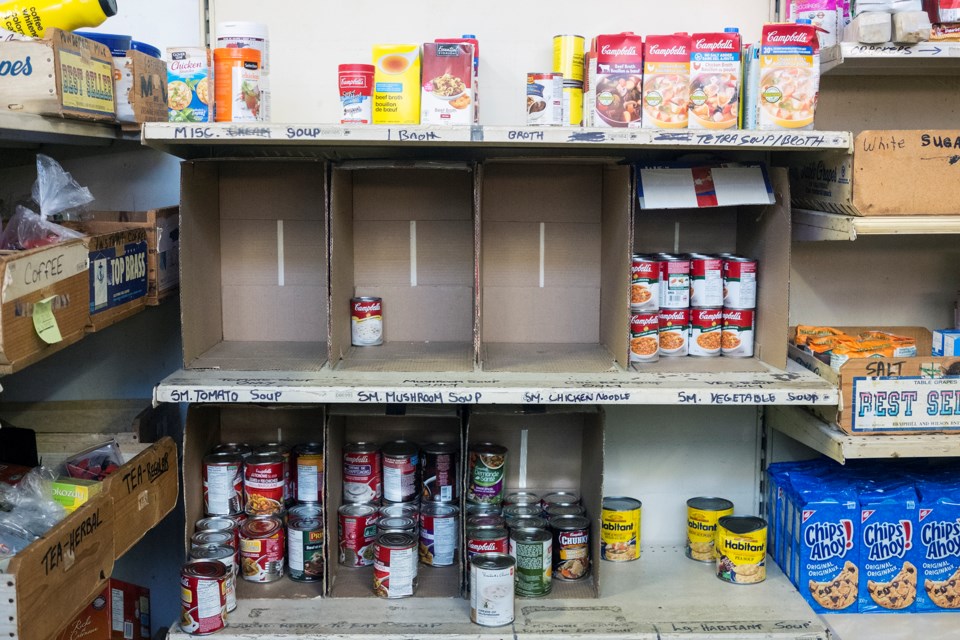The Guelph Food Bank saw an increase in food being distributed in 2020, while donations were down over the previous year. last year was strange in just about every way, said administrator Pauline Cripps.
At the beginning of 2020 the GFB operated on a shopping model which allowed its clients to come in as many times as they would like.
Around the same time of the first lockdown in March, GFB moved to an emergency hamper model.
“We had to limit the number of people coming in because of COVID, having that unlimited system would not have worked well,” said Cripps.
Now families of two or more can pick up a large hamper filled with essentials once a month. Single people can pick up a smaller hamper up to two times a month.
In 2020 GFB received 1,052,495 pounds of donated food, about 300,000 pounds less than in the previous year.
At the same time the need for food grew, from 1.3 million pounds distributed in 2019 to 1.65 million pounds going out in 2020.
“Our output went up by 300,000 pounds but our input decreased by 300,000 pounds,” said Cripps.
To make up the shortfall, GFB purchased the difference in food with the assistance of donations, including a large one from a Wal-Mart program in collaboration with Food Banks Canada.
The demographic of the clients changed a few times during the pandemic, said Cripps, especially after the $2,000-a-month Canadian Emergency Response Benefit (CERB) payments went out.
“At the beginning of the pandemic we saw quite a few of our clients who were regulars that were all of a sudden not needing to come in because they had the additional CERB payments coming in and putting them in a spot where they were okay on their own,” said Cripps.
At the same time, GFB gained new clients or had previous clients return after years of not coming in because the CERB payments were lower than their usual wages.
“Yeah, they were getting CERB, but when you are used to living off your earned income and you have all of your budgets set up and then go down to $2,000 a month it makes a huge difference,” said Cripps.
“We saw a real switch in our demographic base there and then when they started going back to work and the CERB was going away it reversed again and then at the end of the year when the layoffs came again you had both,” said Cripps. “It’s been all over the map in the last year and we are starting to see increases because everybody is coming back.”
She added: “it’s been a weird year for statistics.”
Cripps said many food drives were cancelled last year or they brought in fewer donations than in a normal year, but by the end of the year, especially near Christmas, they started to ramp up again.
“The community has never let us down,” said Cripps. “We have a lot of really amazing supporters in the community without whom we couldn’t do what we do.”
Despite the pandemic, Cripps said many people in the community have also stepped up to volunteer their time to help GFB to operate.
Although some large food drives had to be scaled back or cancelled, Cripps said many individuals took it upon themselves to do what they could to help.
“We saw a lot of independent food drives that way and it was awesome,” said Cripps. “They would go around and canvas their own communities and drop letters off at different houses saying they would be coming around on this day to pick up food if you can leave it on your porch or at the end of your driveway I will come around and take it to the food bank.”
Heading into a March food drive, Cripps said the most needed items at GFB are canned soups and stews, canned vegetables, canned fruit, canned pasta sauce, Kraft Dinner, meal helpers and canned meats excluding tuna.
“We need tuna too, but we need the other kinds more,” said Cripps.
